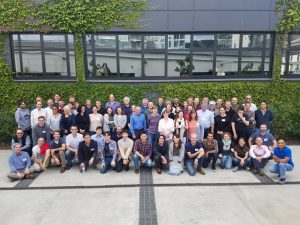Thinking about the methods & climate-dependencies in time-varying biological reference points: a case study with summer flounder.
Cecilia O’Leary
December 3rd, 2019 9:00 AM (PST): FSH 203
Fisheries managers use biological reference points (BRPs) as targets or limits on fishing and biomass to maintain productive levels of fish stock biomass. There are multiple ways to calculate BRPs when biological parameters are time-varying. Using summer flounder (Paralichthys dentatus) as a case study, we investigated time-varying approaches in concert with climate-linked population models to understand the impact of environmentally-driven variability in natural mortality, recruitment, and size-at-age on two commonly-used BRPs (B_0(t) and F_35%(t) ). We used two approaches to calculate time-varying BRPs: dynamic-BRP and moving-average-BRP. We quantified the variability and uncertainty of different climate dependencies and estimation approaches, attributed BRP variation to variation in life-history processes, and evaluated how using different approaches impacts estimates of stock status. Results indicate that the dynamic BRP approach using the climate-linked natural mortality model produced the least variable reference points compared to others calculated. Summer flounder stock status depended on the estimation approach and climate model used. These results emphasize that understanding climate dependencies is important for summer flounder reference points and perhaps other species, and careful consideration is warranted when considering what time-varying approach to use, ideally based upon simulation studies within a proposed set of management procedures.

